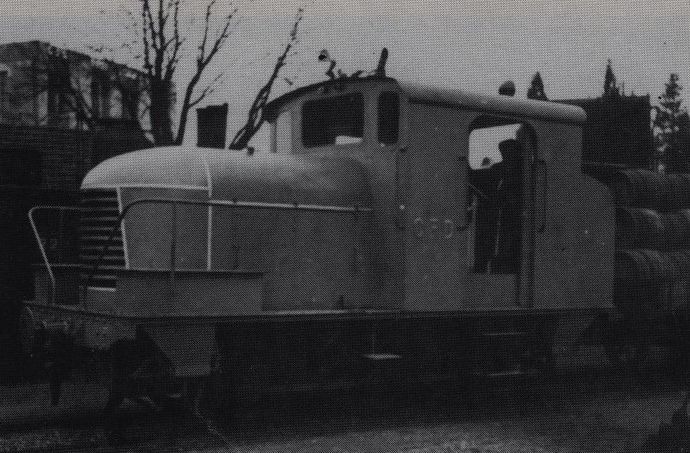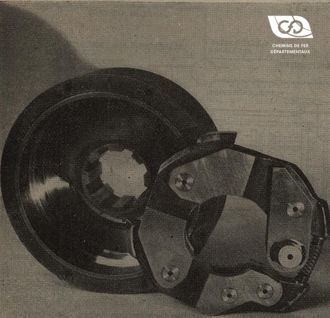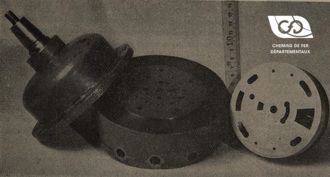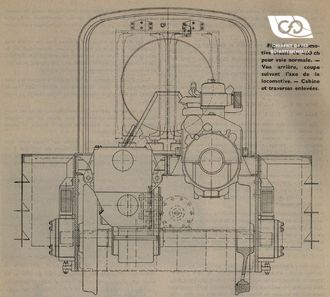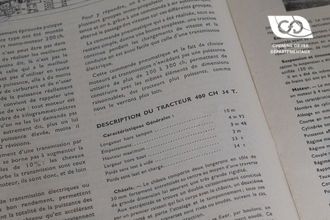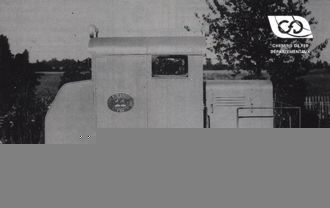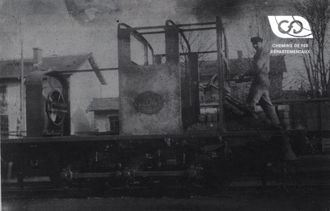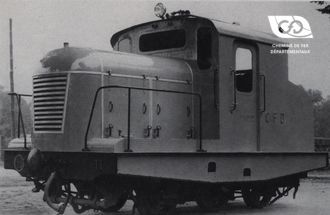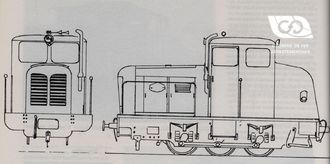The C.F.D. Company, wishing to generalise diesel traction on all its networks, decided to set up a workshop in Neuillé-Pont-Pierre specialising in the construction of locotractors. Indeed, the tools and the vast premises of this depot seemed to be suitable for the production of mass-produced equipment. On the other hand, the fleet of the Nord d'Indre-et-Loire network included several type 030 locomotives that were in the process of being overhauled and which the Department wished to dispose of. As this type of machine did not require shortening of the chassis, the transformation could only be facilitated.
Having negotiated the purchase of three machines with the Department, the C.F.D. had them transformed for their own account by a team composed of personnel who had participated in the development of tractor 204 and led by Mr. Costes, Head of the Neuillé-Pont-Pierre depot.
Description of the prototype tractor No. 4 from Indre-et-Loire
This tractor, with a reinforced chassis, similar in appearance to the 204, had, however, received some minor modifications:
- the driver's cab had sliding doors and only these had a window. At the rear, a central window replaced the three existing openings on the 204.
- the engine hood and its bulky nose were more rounded in shape, and the grille was cut into a trapezoidal shape with its large base downwards.
- access to the engine inspection platforms was in front of the cab. The guardrails extended to the front of the engine hood, where they framed the nose with a V-shape.
- two sandboxes had been placed at the front, on either side of the engine.

The transmission was by means of chains and the 75 HP CLM engine was a LC 35 type. This innovation did not give the expected results and penalized this machine afterwards. In fact, this transmission, which was mainly aimed at financial savings compared to the MINERVA system, caused great concern to the various heads of depots during its various assignments.

Its livery was identical to the 204, but it was marked differently by having the company initials and number embossed on the cab using characters cut out of sheet metal. The front and rear cross members were painted bright red and the company logo and number were painted yellow with black.





